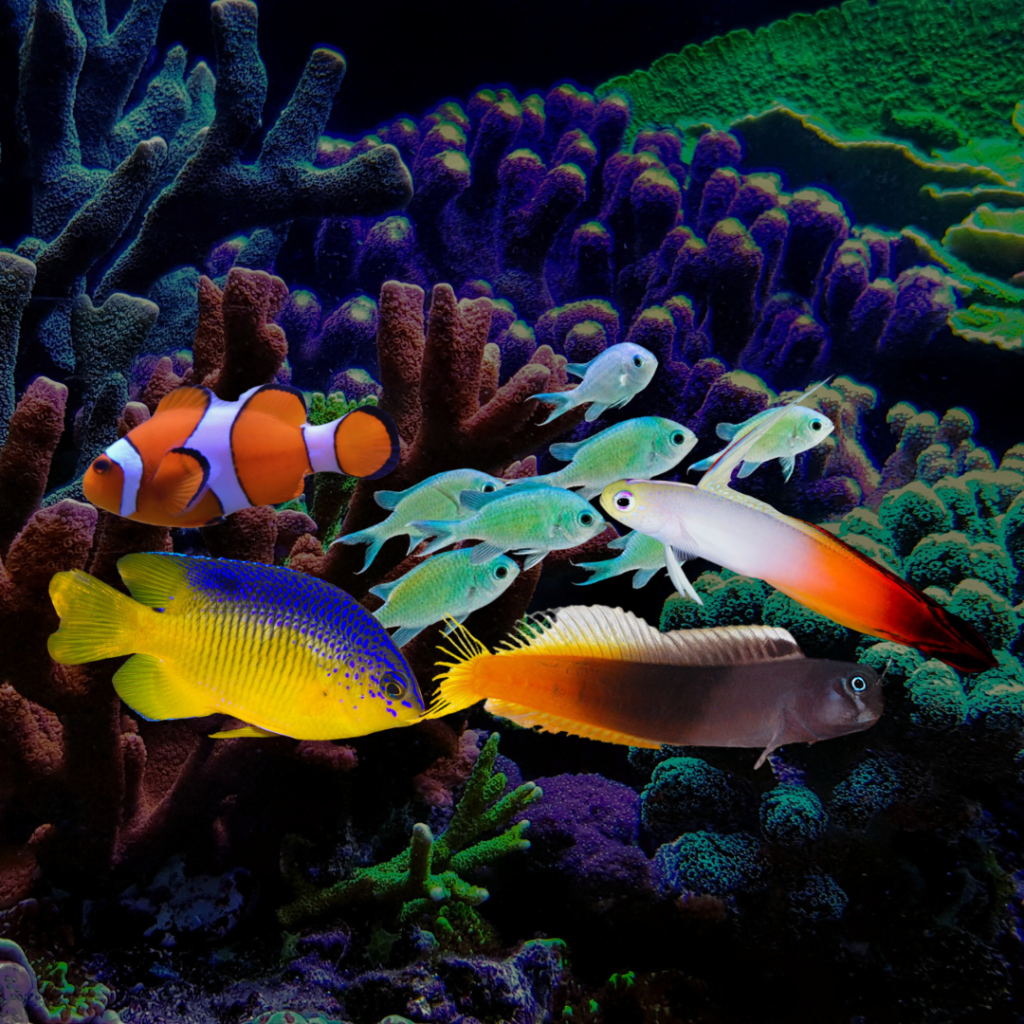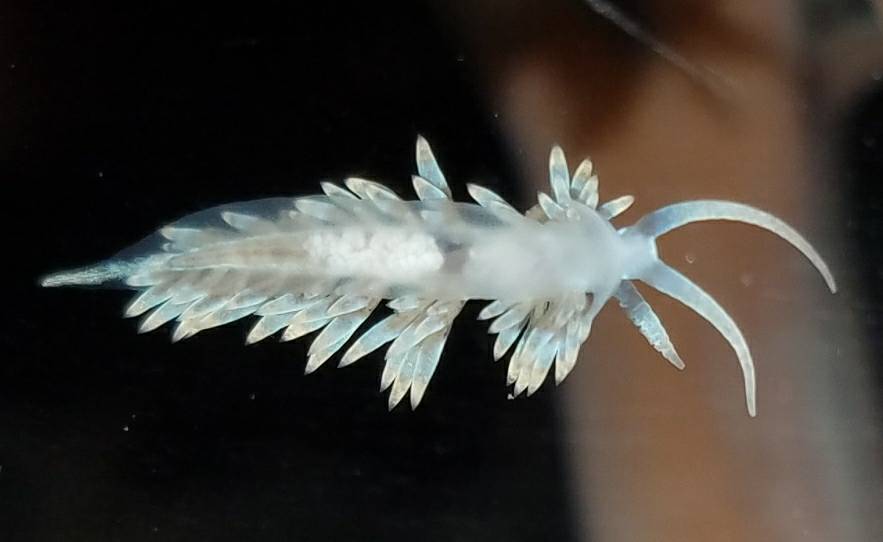Setting up and maintaining a saltwater aquarium can be a fascinating and rewarding hobby, but it can also be expensive. Thankfully, there are several budget-friendly saltwater fish species available to help you create a stunning marine ecosystem without breaking the bank. In this article, we’ll explore some cheap saltwater fish species, providing information on their price, size, diet, compatibility, and hardiness level.
Clownfish
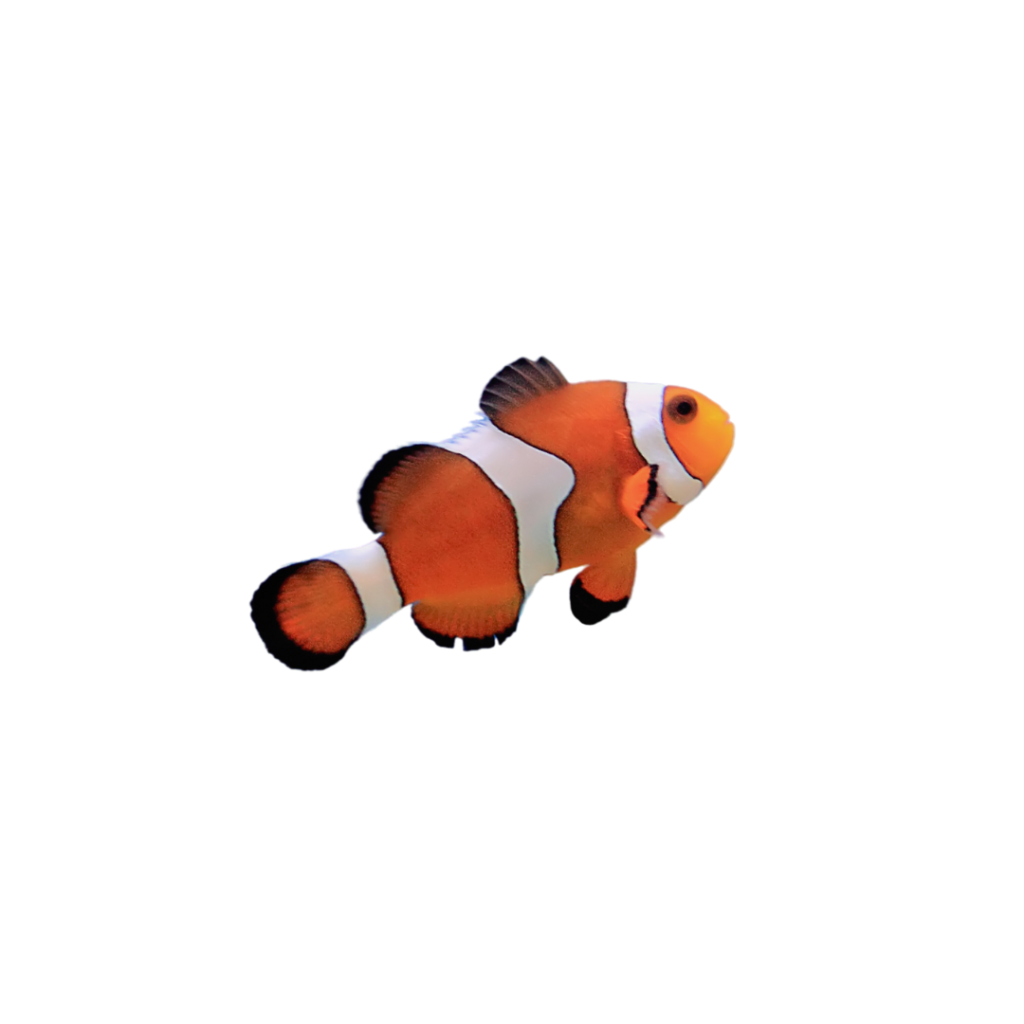
Price: $15-$30 depending on species and color variation.
Size: 2-4 inches, depending on species.
Diet: Omnivorous – will eat small invertebrates, algae, and high-quality pellet or frozen foods.
Compatibility: Generally peaceful and can be kept with other non-aggressive fish. Avoid keeping multiple males together, as they may fight. Clown fish are also considered to be very reef safe
Hardiness Level: Clown fish are one of the most hardy saltwater fish
Clownfish are not only visually captivating, but they also exhibit fascinating social behaviors. These fish are protandrous hermaphrodites, which means that they can change their sex based on the social structure within their group. The dominant female in a group is typically the largest, and if she dies or is removed, the dominant male will change into a female to take her place.
When it comes to tank setup, clownfish prefer an environment with hiding spots and structures. While they are known for their relationship with anemones, they can thrive in a tank without one. If you choose to include an anemone, select a species compatible with your chosen clownfish species. Remember that anemones have their own care requirements, which can add complexity to your tank’s maintenance.
Related: Rock Flower Anemone
Damselfish
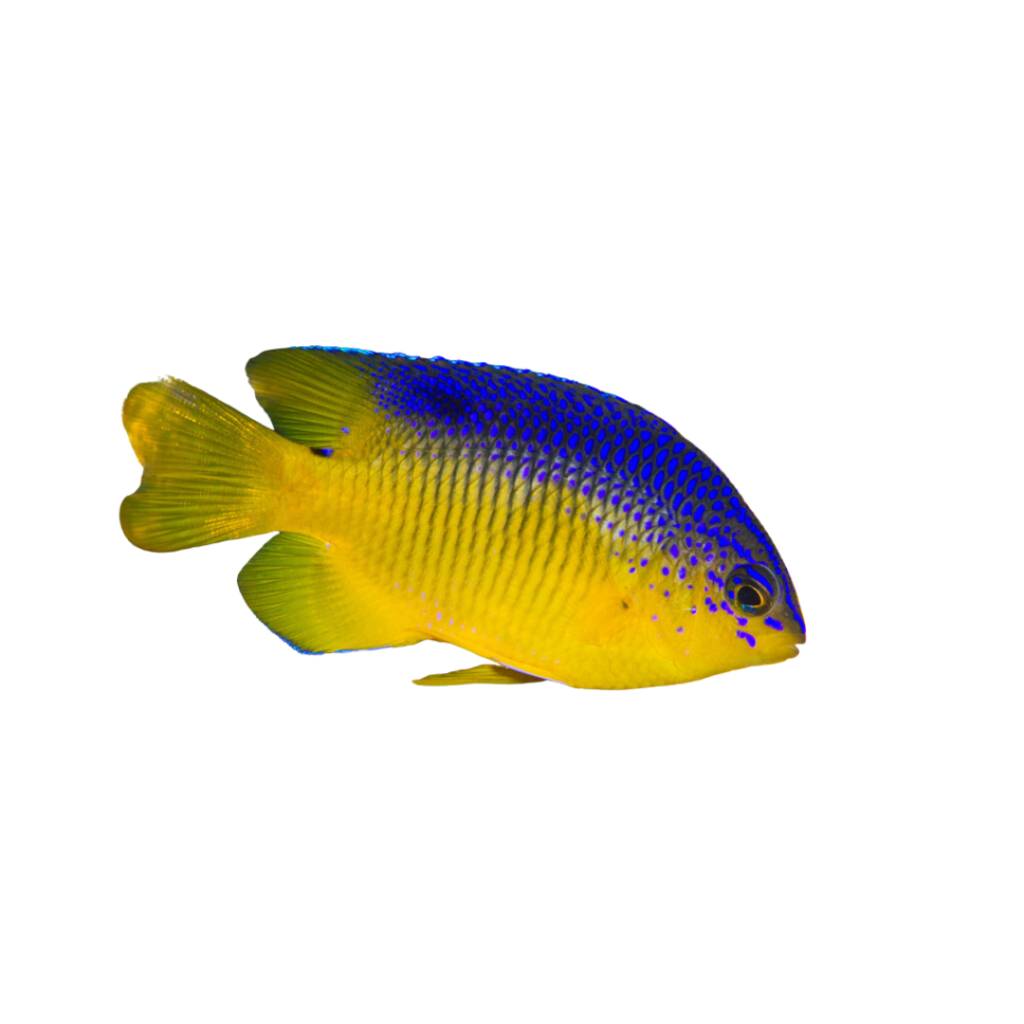
Price: $5-$25, depending on species.
Size: 1-3 inches, depending on species.
Diet: Omnivorous – will eat algae, plankton, and high-quality pellet or frozen foods.
Compatibility: Can be territorial; avoid keeping with slow or timid fish. Generally compatible with other non-aggressive fish.
Hardiness Level: Hardy and adaptable to various water parameters.
Damselfish are fast swimmers and can be quite entertaining to watch. They are known for their territorial behavior, especially during the breeding season. To minimize aggression, ensure your tank has ample hiding spots and territories. This will help diffuse any territorial disputes among your fish.
In a reef tank, damselfish can be beneficial, as they help control algae growth by consuming it as part of their diet. However, it is essential to research the specific damselfish species you plan to add, as some can be more aggressive and may not be suitable for community tanks with smaller or more peaceful fish species.
Firefish

Price: $10-$20, depending on size and coloration.
Size: Up to 3 inches.
Diet: Carnivorous – will eat small zooplankton, mysis shrimp, and high-quality pellet or frozen foods.
Compatibility: Peaceful; suitable for a community tank with other non-aggressive fish. Avoid housing with aggressive or predatory species.
Hardiness Level: Hardy and easy to care for.
The Firefish’s unique swimming behavior, characterized by darting and hovering, can be quite mesmerizing to watch. They often use their elongated dorsal fins as a means of communication, raising and lowering them to signal their mood or intentions to other fish.
In the wild, Firefish inhabit small caves and crevices, so it’s essential to provide them with numerous hiding spots in your aquarium. This can be achieved by creating rock formations, using PVC pipes, or including small caves. Firefish can be shy and are prone to jumping when startled, so it’s crucial to have a well-secured lid on your aquarium.
Firefish are great cheap saltwater fish for beginner reefers looking to add a splash of color to their saltwater tank, without breaking the bank.
Blennies
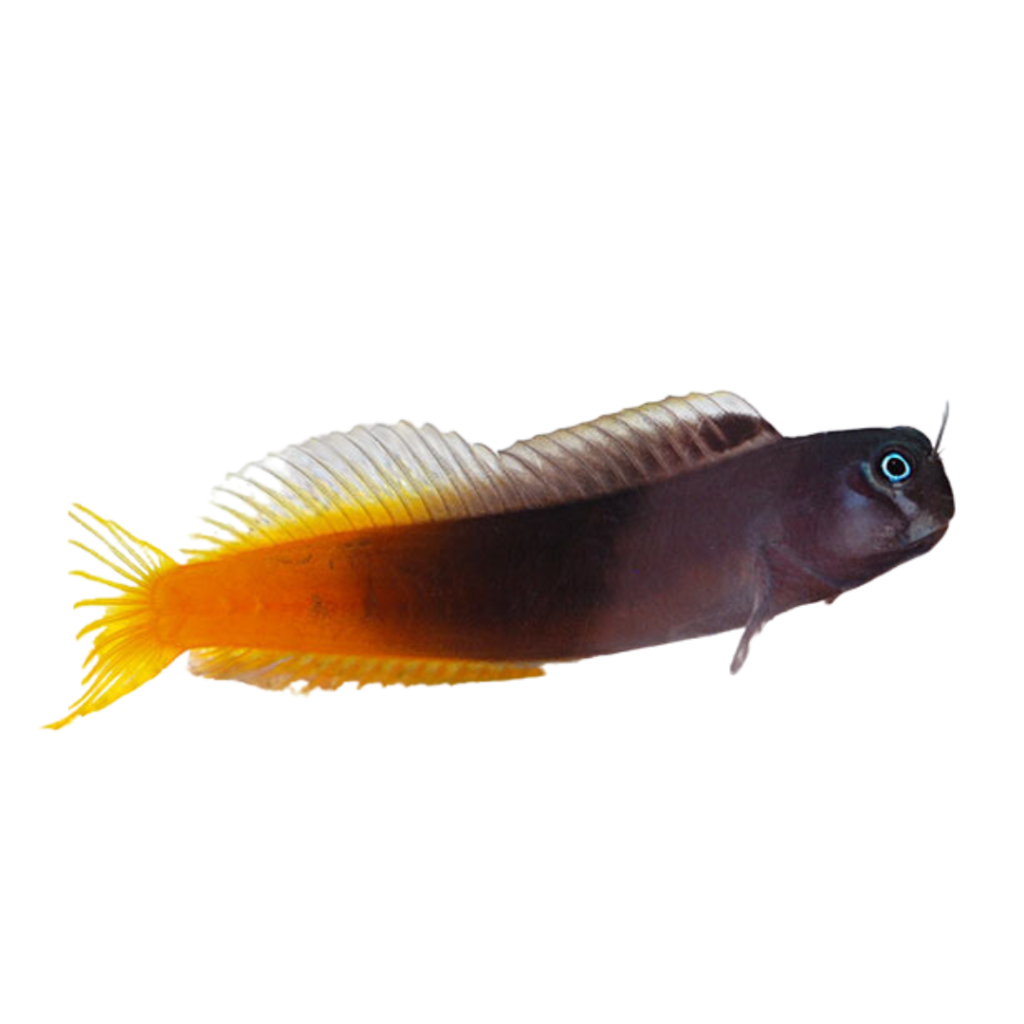
Price: $15-$35, depending on species.
Size: 2-6 inches
Diet: Omnivorous or herbivorous – will eat algae, detritus, small invertebrates, and high-quality pellet or frozen foods.
Compatibility: Generally peaceful; suitable for a community tank with other non-aggressive fish. Avoid housing with larger, aggressive species.
Hardiness Level: Hardy and well-suited to beginner aquarists.
Blennies are personable and curious fish that can provide endless entertainment for aquarists. They often perch on rocks and corals, observing their surroundings and occasionally swimming around to explore their environment. Many blennies are also known to have unique and comical facial expressions.
Some blenny species, such as the Lawnmower Blenny, can be beneficial in controlling algae growth within your aquarium. However, they should not be solely relied upon for this purpose, and supplemental feedings with high-quality pellets or frozen foods should be provided. In a well-established reef tank, blennies will also graze on microalgae, detritus, and small invertebrates.
Related: 19 Best Algae Eating Fish + Inverts For Saltwater Tanks
Chromis
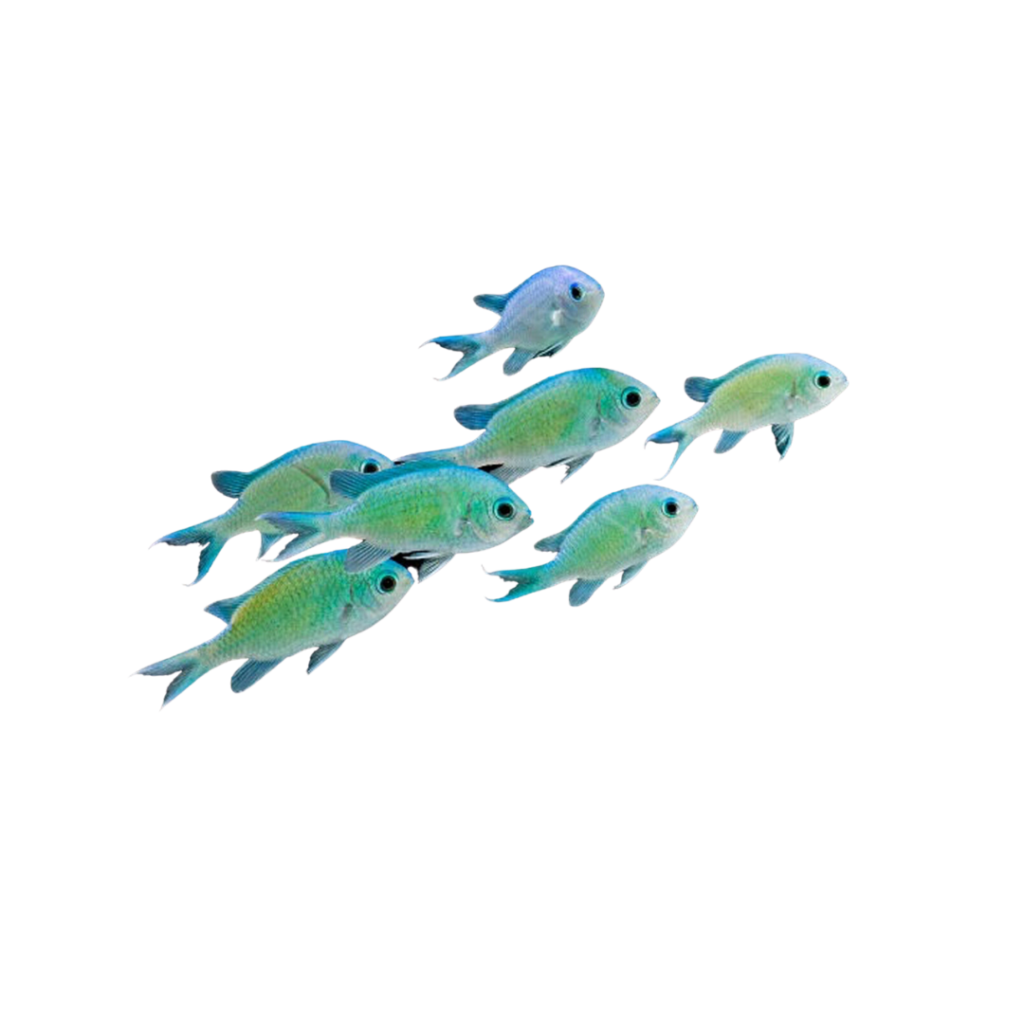
Price: $8-$15, depending on size.
Size: Up to 3 inches.
Diet: Omnivorous – will eat zooplankton, phytoplankton, and high-quality pellet or frozen foods.
Compatibility: Peaceful and schooling; best kept in groups of five or more with other non-aggressive fish.
Hardiness Level: Hardy and easy to care for.
Chromis are another great cheap saltwater fish that exhibit intricate social behaviors, making them fascinating to observe in an aquarium setting. They are most active during the day and will often retreat to hiding spots or form tight schools at night for protection. Chromis are less prone to nipping at corals than other damselfish species, making them a popular choice for reef tanks.
In a larger aquarium with ample swimming space, you may consider adding multiple Chromis species to create a more dynamic and visually appealing display. When mixing different Chromis species, ensure that there is enough space and hiding spots to prevent any potential territorial disputes.
Chromis are also known to be relatively disease-resistant, making them a hardy and low-maintenance choice for a budget saltwater aquarium.
Check out some of the most hardy fish for you saltwater tank here!
Setting Up Your Budget Saltwater Aquarium
When setting up a budget saltwater aquarium, there are a few key factors to consider:
- Tank Size: Aim for a tank size of at least 30 gallons to provide adequate swimming space and maintain stable water conditions.
- Filtration: Invest in a high-quality filtration system to ensure a healthy environment for your fish. Look for a system that provides mechanical, biological, and chemical filtration.
- Water Quality: Regularly test and maintain appropriate water parameters, including salinity, pH, and temperature. Utilize live rock and sand to help with biological filtration and maintain a stable environment.
- Lighting: Although some fish species don’t require specialized lighting, investing in a good-quality LED lighting system can enhance the natural colors of your fish and create a visually appealing environment.
- Tank Mates: When selecting tank mates, keep in mind the compatibility, size, and temperament of the fish species you choose. Aim for a harmonious community of non-aggressive fish that share similar water parameters and dietary needs.
How to acclimate your new fish:
Introducing your new saltwater fish to their aquarium is a critical step that requires careful attention to ensure a smooth transition and reduce stress. The acclimation process helps your fish adapt to the new water parameters gradually, reducing the risk of shock or illness. Follow these steps to properly acclimate your fish:
- Float the unopened fish bag in your aquarium for 15-20 minutes to equalize the temperature between the bag’s water and your tank’s water.
- After the temperature has equalized, open the bag and roll the edges down to create an air pocket to help it float. Slowly add a small amount of tank water to the bag, about 1/4 to 1/2 cup, every 5-10 minutes. Repeat this process for 30-45 minutes to allow the fish to adjust to the new water parameters.
- Use a net to gently transfer the fish from the bag to your aquarium, being careful not to introduce the bag’s water into your tank, as it may contain contaminants or pathogens.
- Monitor your new fish closely for the first few hours to ensure they are adjusting well to their new environment. If you notice signs of stress or abnormal behavior, consult an aquarium expert or marine biologist for guidance.
Expert Tips for a THRIVING saltwater aquarium
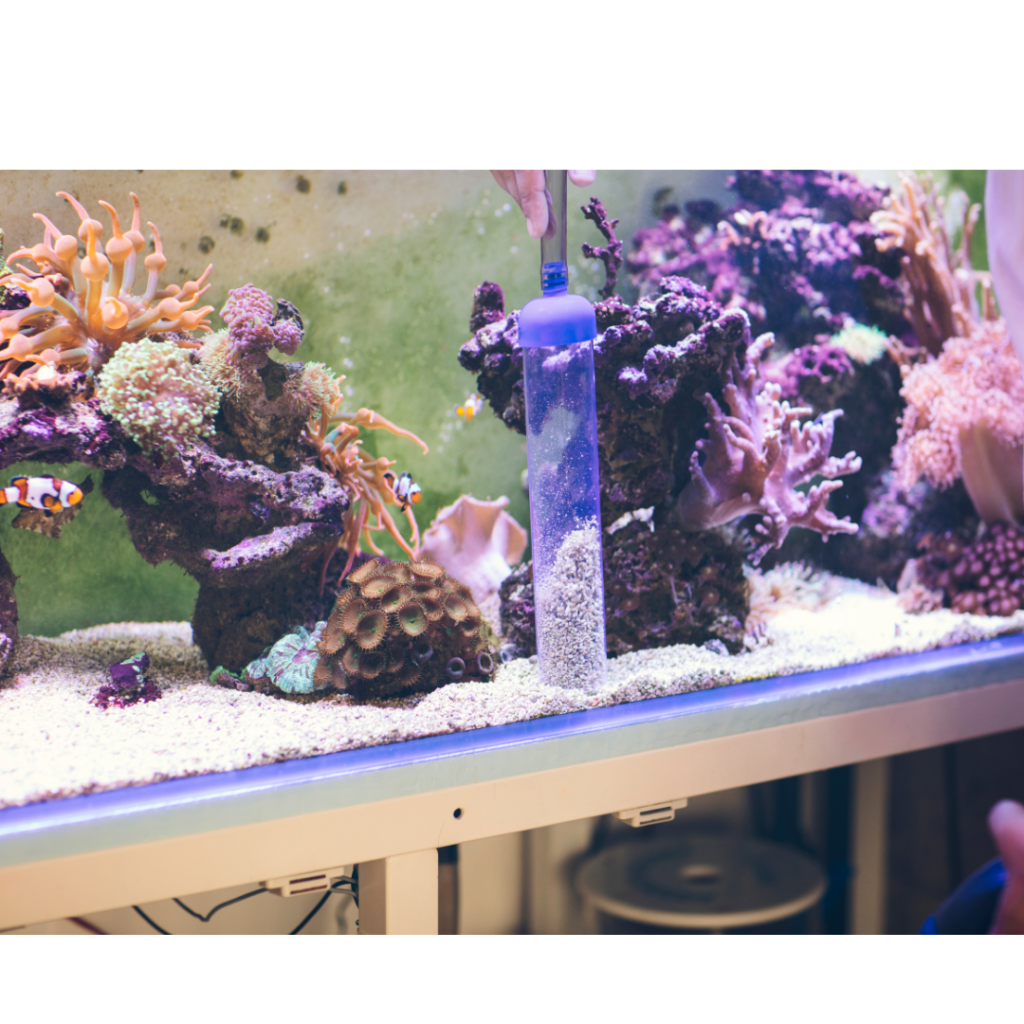
Through many years of trial and error within the reefing hobby, we have come across many things that have provided great learning experiences.
Here are some expert tips to help you avoid common mistakes and enhance your success in maintaining a thriving saltwater aquarium:
Start with a larger tank:
While it may be tempting to start with a small aquarium, larger tanks are more forgiving when it comes to maintaining stable water parameters. A larger water volume provides a buffer against rapid fluctuations in water chemistry, temperature, and other factors that could stress your fish.
Go slow with your livestock additions:
Adding too many fish or invertebrates at once can overwhelm your tank’s biological filtration, leading to spikes in ammonia and nitrite levels. Gradually introduce new tank inhabitants to give your aquarium time to adjust and maintain a stable environment.
Be diligent about water testing:
Regularly test your water parameters, such as ammonia, nitrite, nitrate, pH, alkalinity, and salinity. Monitoring these parameters helps you catch any potential issues before they become major problems.
Invest in an aquarium controller:
An aquarium controller can help automate and monitor many aspects of your tank, such as temperature, pH, and salinity. This can provide you with peace of mind and ensure that your tank remains stable, even when you’re not around.
Use a high-quality salt mix:
Not all salt mixes are created equal. Invest in a reputable brand to ensure that your aquarium has the appropriate levels of trace elements and minerals needed for optimal coral growth and fish health.
Perform regular equipment maintenance:
Clean and inspect your equipment, such as filters, heaters, and pumps, regularly to ensure they are working efficiently and to prevent any potential failures.
By applying these expert tips to your reef-keeping journey, you’ll be better equipped to overcome challenges and enjoy a successful, thriving saltwater aquarium.
Our FAVORITE cheap saltwater fish
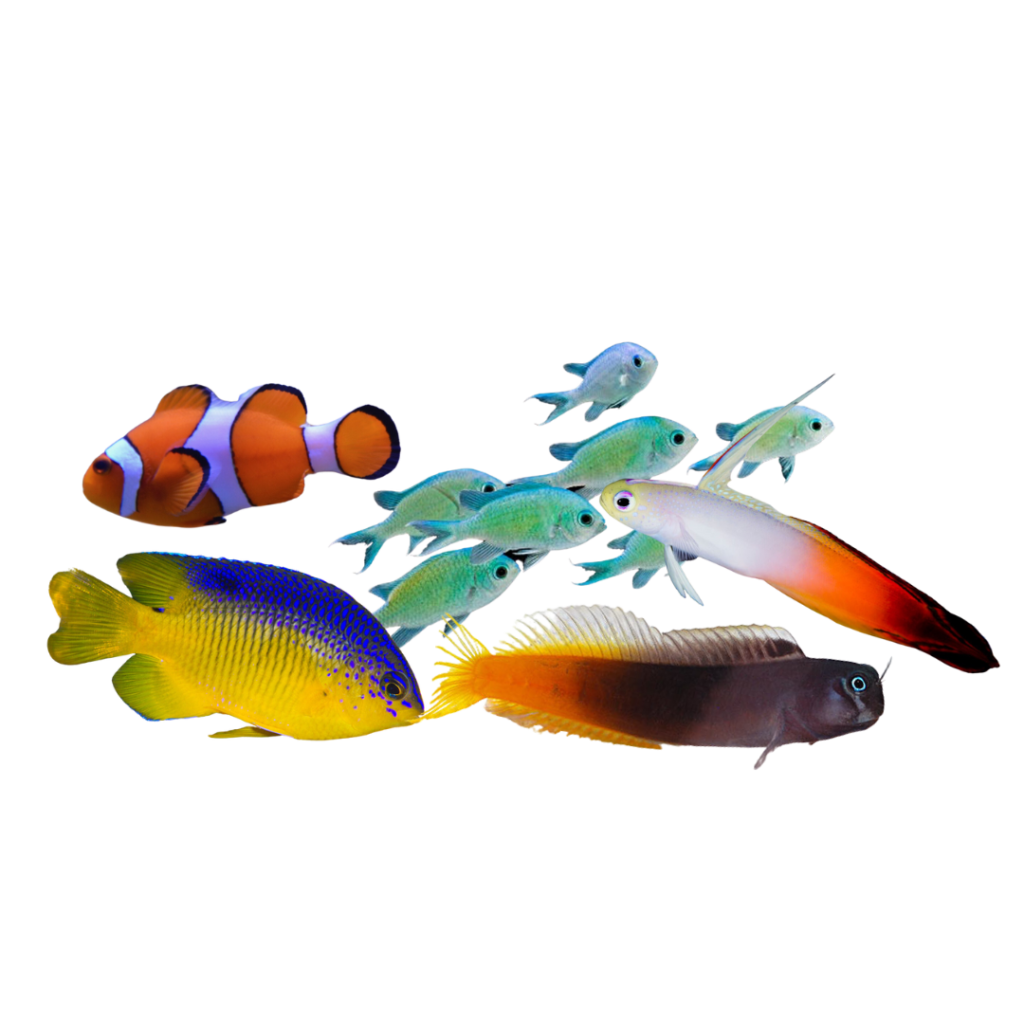
In conclusion, building a thriving saltwater aquarium on a budget is entirely possible with careful planning, research, and attention to detail.
By selecting affordable yet hardy saltwater fish species and focusing on essential aspects such as tank size, filtration, water quality, lighting, and compatible tank mates, you can create a stunning marine environment without overspending.
By incorporating expert tips into your aquarium care routine, you’ll be well on your way to enjoying a captivating and rewarding hobby that brings the wonders of the ocean right into your home.

